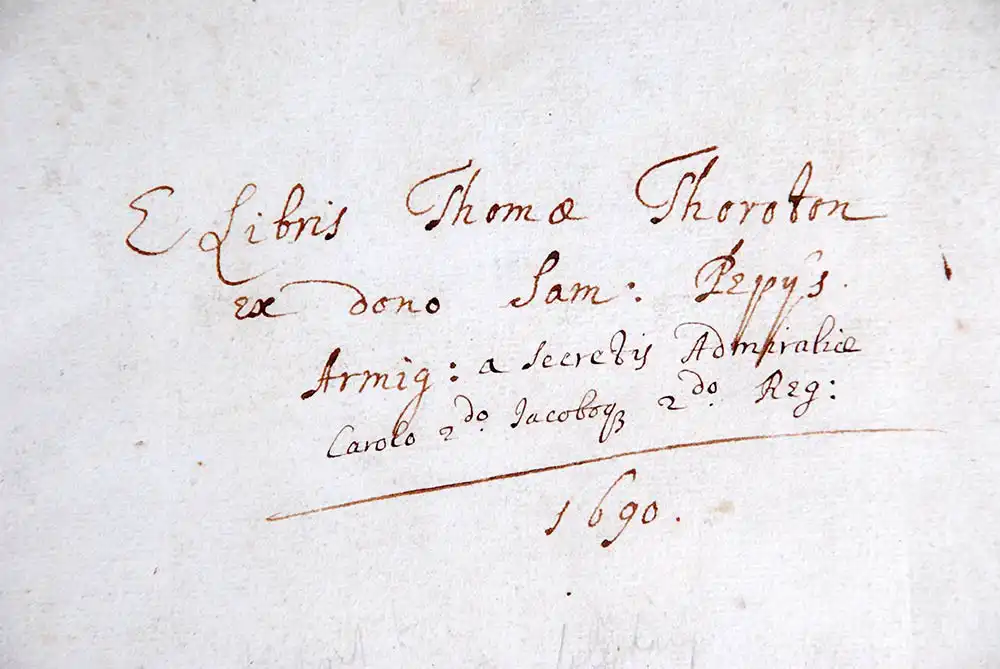
Richard Knolles. The Turkish history, from the original of that nation, to the growth of the Ottoman Empire: with the lives and conquests of their princes and emperors. 6th edition. London: Printed for Awnsham Churchill, 1687.
The flyleaf of this copy of the sixth edition of Knolles’ Turkish history bears the signature of the famous diarist, naval officer and bibliophile Samuel Pepys (1633-1703) and his presentation inscription dated 1690 to a London lawyer, Thomas Thoroton.
Thoroton (1663-1721) was a barrister of the Middle Temple, and, at the time he came into possession of the book, about twenty-seven years of age. Thoroton’s bookplate is found on the verso of the title-page.
Other evidence for the friendship between Pepys and Thoroton is lacking, and the reason behind the gift remains unknown. One theory is that the young lawyer offered legal advice during Pepys’ brief period of imprisonment in mid-1690 on suspicion of treason, and that Pepys, upon his vindication and release, presented the book as a mark of his esteem.
‘Armig’ is an abbreviation of ‘Armiger’ – one entitled to wear a coat of arms. The remaining words signify Pepys’ role as Secretary to the Admiralty during the reigns of Charles II and James II. Pepys’ signature was verified by Magdalene College, home of the Pepys Library, on Reed’s behalf.